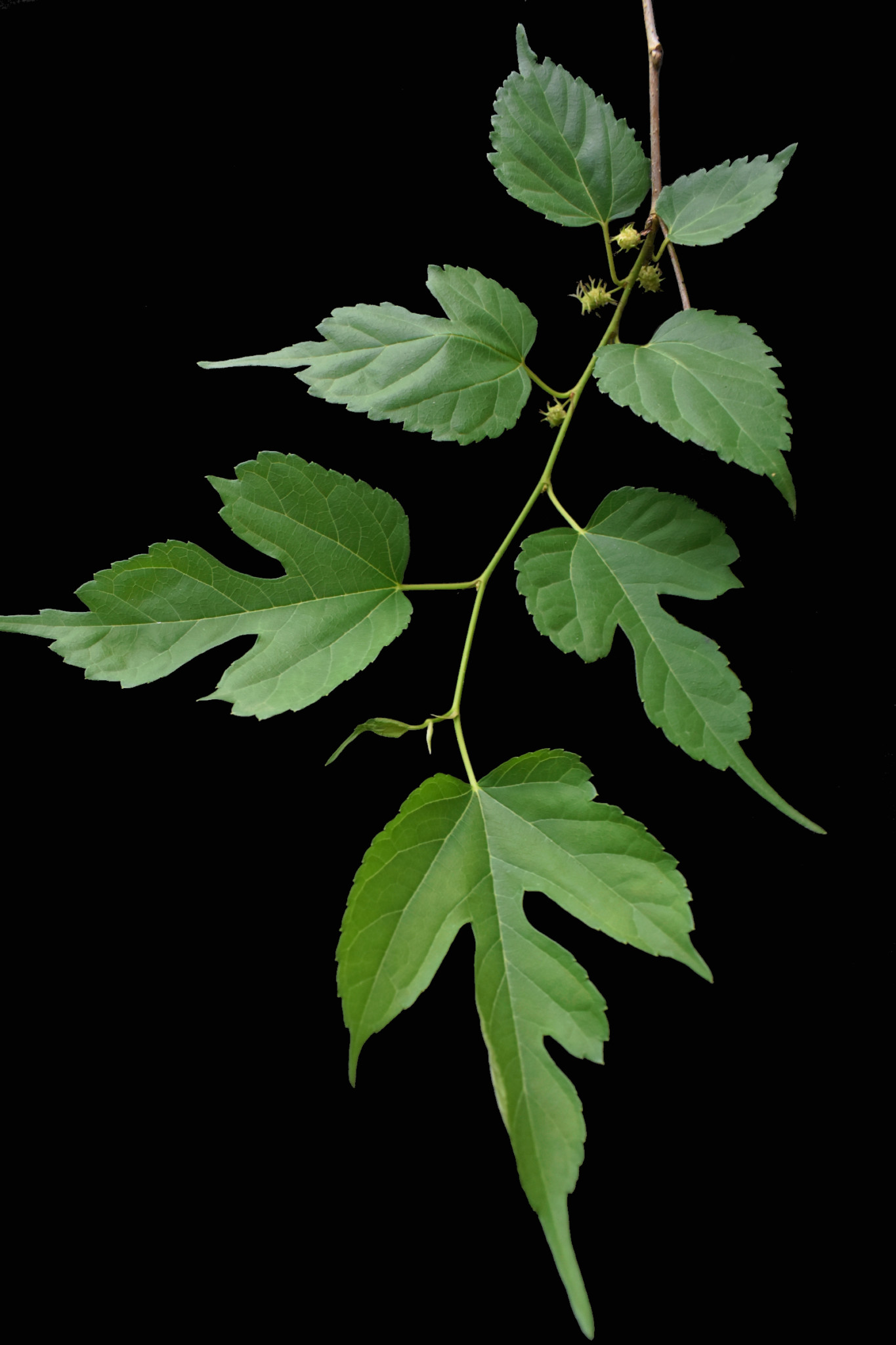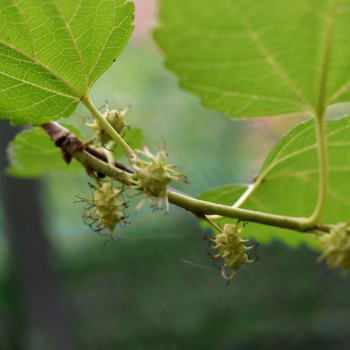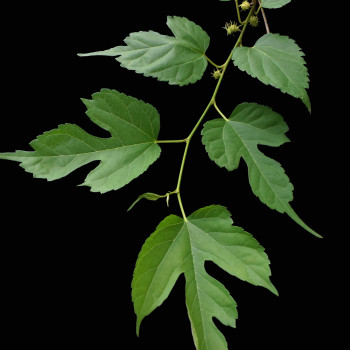Mulberry

Scientific Name :
Morus alba L.
Synonym(s) :
Morus intermedia Perr.
Local/Common name(s) :
Mulberry
Family :
Moraceae
Habit :
Tree
Flowering/Fruiting Time :
Throughout the year
Habitat :
Cultivated
Endemic :
No
Status (IUCN) :
Distribution :
Afghanistan and North West Asia
Nativity :
Exotic
Uses :
Medicine, food
Description (Morphology) :
A deciduous, 8-15 m or rarely up to 20 m tall tree with a dense, compact leafy crown. Trunk with dark grey-brown, rough, vertically fissured bark, tender twigs hairy to glabrescent. Leaves with a crisped hairy, filiform,1-3 (-3.5) cm long petiole. Lamina narrow to broad, ovate, 3-costate from truncate to shallowly cordate base, upper surface glabrous, midrib and principal wins pubescent, secondary veins and ultimate veinlets glabrous, margin regularly serrate or crenate-serrate or irregularly 2-serrate, apex obtuse, acute or shortly acuminate; stipules lanceolate, brownish membranous and hairy. Male catkins 10-20 (-30) mm long including slender, hairy peduncle, with lax flowers. Male flowers: Sepals free, broadly ovate, c. 2.5 mm long, cucullate, obtuse, glabrous to hairy; staminal filaments equal to sepals, with ovate, exserted anthers. Female catkins ovoid, (2) 5-10 (-12) mm long, with out equally long or slightly longer peduncle. Female flowers: Sepals suborbicular, c. as long as or slightly larger than of male flowers, glabrous or ciliate on margins; ovary with glabrous free styles. Sorosis ovoid, 5-8 mm across, white to pinkish-purple or black, sweet and edible.



